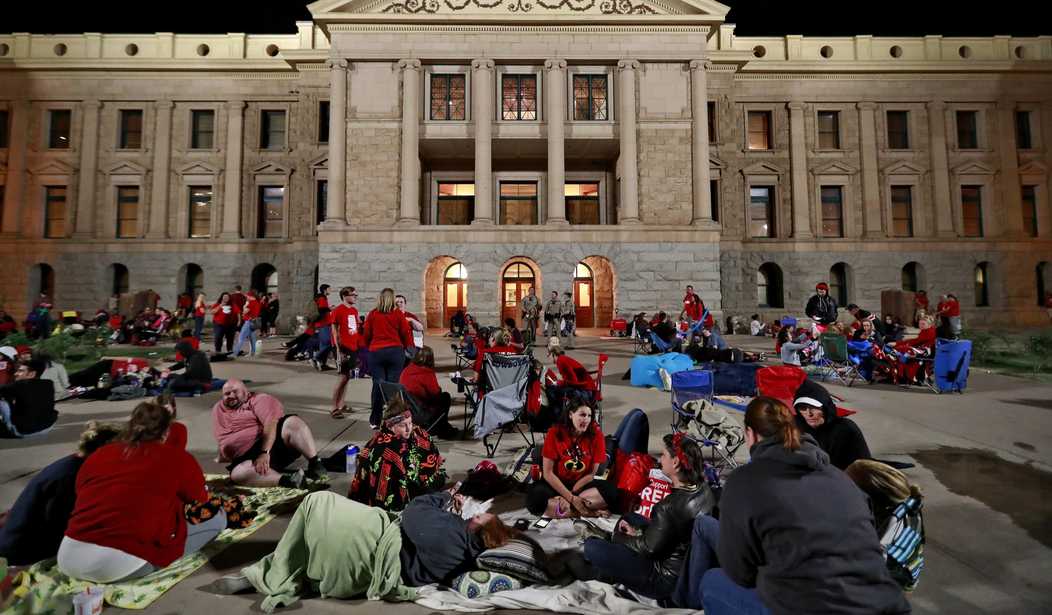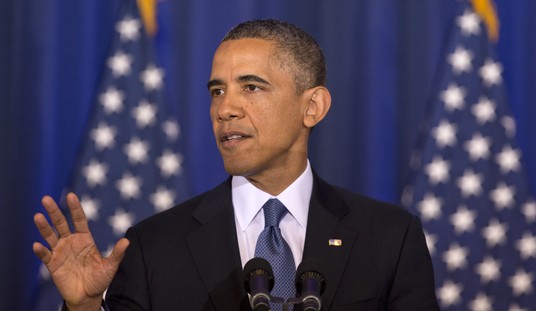Forget Congress. State legislatures are where the real action happens. Roads. Schools. Sewers. And, of course, legislative district boundaries.
“Washington gobbles up all the oxygen, and there are thousands and thousands of reporters who are tracking it and watching the horse race polls. And, of course, you’ve got the president tweeting and driving the news cycle every day,” said Tim Storey, the director of state services for the National Conference of State Legislatures.
“But the real work is being done in state legislatures, the real work of governing, and most of it, by the way, is being done across the aisle in a bipartisan fashion,” Storey added.
Bipartisan, Storey may say, but most state legislatures are partisan affairs, controlled by Republicans. GOP state lawmakers control the House and Senate in 31 states. Democrats hold the majority in just 14 state legislative chambers and have hope of tipping the balance of power if only slightly.
Democrats like Jessica Post, the executive director of the Democratic Legislative Campaign Committee, want to change that this year. She’s hoping to see at least a few Republican-dominated states turn blue Tuesday.
There are 7,383 state legislators in the 50 states. According to the National Conference of State Legislatures, 6,066 — more than 80 percent of those politicians — face the prospect of losing their jobs this election.
“We have a huge opportunity this Nov. 6 to change the face of power,” said Post. “This is only the beginning of what’s to come.”
Post also said first-time candidates might lead the charge for change.
She said nearly 700 Democratic millennials, 18-34, are running for state legislatures this year in 46 states.
“Young people are stepping up in record numbers to run for office,” Amanda Litman, co-founder of Run for Something, a group pushing progressive candidates under the age of 40, said. “We are living in a unique moment in history, and these candidates heard the call.”
It’s not just millennials who are crowding November Democratic Party ballots across the country. A Washington Post story showed Democrats have more state legislative candidates than American voters have seen in the past 20 years — and are outnumbering GOP legislative candidates for the first time in six election cycles.
“Thank you, Donald Trump,” said Andrea Dew Steele, president and founder of Emerge America, which recruits and trains Democratic women candidates.
Dr. Carl E. Klarner, an election analyst, told the Washington Post that New Hampshire, Maine and Connecticut Democrats will likely be able to flip their state Senates from Republican to Democratic majorities. He also said Arizona Democrats might flip their state House if they can persuade people to vote Tuesday the way they did in 2016 in several districts that went for Hillary Clinton.
Klarner also said the Michigan GOP should lose its supermajority hold over that state’s Senate, if only because so many Republican lawmakers can’t run again because of term limits.
If Democrats can flip just one Republican seat in the New York Senate, they will wrest control of that chamber from the GOP. Democrats will then control all three branches of New York’s state government.
Colorado Democrats expect to retain control of the state House. If they can win just two state Senate seats, Dems will control the state’s legislature. The Colorado Sun reported that scenario prompted outside groups and candidates on both sides of the political spectrum to spend more than $7.5 million on the races.
Denise Roth Barber, managing director of the National Institute on Money in Politics, said the money coming into Colorado’s state Senate elections from outside Colorado show “some folks have looked at where they can make the most influence on policies nationally by targeting certain legislatures to overturn them.”
From a national perspective, Republicans don’t need to be too worried about November, according to Tim Storey, even though the political party in the White House always has a tough time holding on to power.
And, this year, the GOP faces an even more formidable task because President Trump has one of the lowest approval ratings since Gallup began conducting presidential approval polls, dating back to President Harry Truman’s administration. That hurts the GOP.
“The popularity of the president has a three-times greater impact on who can win a legislative election than the popularity of the legislators themselves,” Storey said. “I think the biggest issue is President Donald Trump, and then the second-biggest issue is President Donald Trump, and then the third-biggest issue is probably President Donald Trump.
But Storey also said Republicans have never been in a stronger state legislative position. “You can look at that in terms of chambers; you can look at it in terms of legislatures; you can look at it in terms of members. There have been more Republican legislators in the past back in the early 1920s.”
Storey expects by the end of Tuesday night more than 90 percent of incumbents — Democrats and Republicans — will have won re-election.
But he also believes there will be a Democratic wave.
“The question is,” Storey said, “will it be a small wave or a fairly large wave?”









Join the conversation as a VIP Member